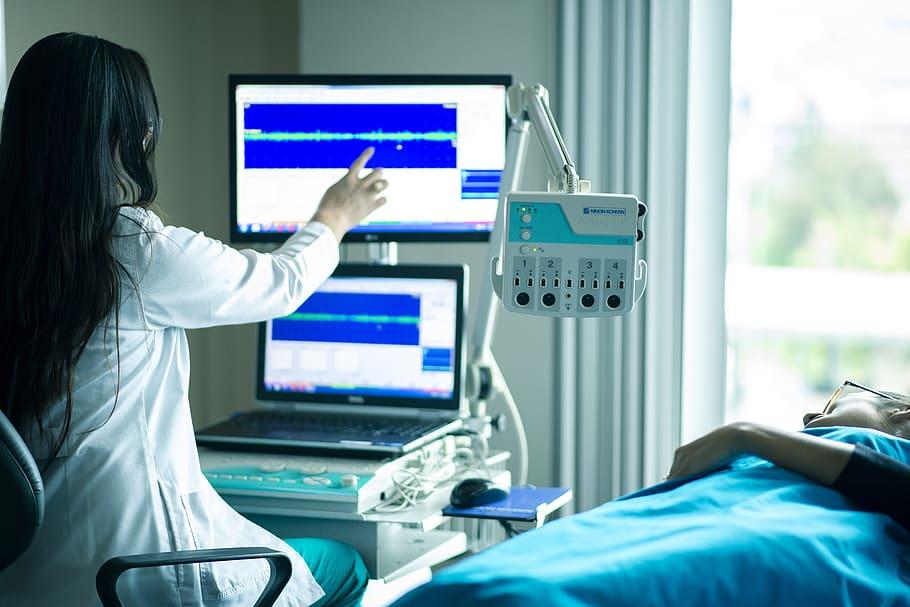Table of Content
The "Joint Principles" that popularly define a PCMH were established through the efforts of the American Academy of Pediatrics , American Academy of Family Physicians , American College of Physicians , and American Osteopathic Association in 2007. Care coordination requires additional resources such as health information technology and appropriately-trained staff to provide coordinated care through team-based models. Additionally, payment models that compensate PCMHs for their functions devoted to care coordination activities and patient-centered care management that fall outside the face-to-face patient encounter may help encourage further coordination. There are several reasons why the medical home model is well-suited to meeting the needs of patients in the ACA era.
When we know that, doctors can screen for clinical depression and offer treatment, as well as provide more meaningful counseling on coping skills, nutrition, and self-care. Patricial Aguayo is an adult and child psychiatrist and an assistant professor of psychiatry at University of Utah Health. Aguayo serves as medical director of the Neurobehavior HOME and Autism Spectrum Disorder Clinic at the Huntsman Mental Health Institute. Her interests include autism spectrum disorders and related disabilities, along with advocacy for children, young adults, and their families. Aguayo received an MD from Universidad Anahuac in Mexico City, Mexico, completed a residency in psychiatry at New York Medical College, and a fellowship in Child and Adolescent Psychiatry at Yale Child Study Center. She also received a Master of Public Health degree from the University of Arizona.
Person Who Helps People in Their Homes With Medical Issues?
Health care systems that are patient-centric and outcome-driven are well-equipped to succeed in this work. No matter where you fall on the spectrum of practice improvement—managing current projects, enhancing basic concepts, or advancing to more complex initiatives—adopting the five key functions of a medical home can benefit your practice, your patients, and your bottom line. Improve Patient-Centered Access PCMHs emphasize the use of health information technology and after-hours access to improve overall access to care when and where patients need it. At Vivent Health, our integrated services model includes housing programs, legal assistance, a food pantry, and prevention services that overcome social determinants of health and help individuals successfully manage and prevent HIV.
In the PCMH model, the integration of diverse services that a patient may need is encouraged. This integration which also involves the patient in interpreting the streams of information and working together to find a plan that fits with the patient's values and preferences is under-recognized and under-appreciated. A UnitedHealth Group medical home pilot in Arizona involving 7,000 patients and 7 medical groups began in 2009 and is scheduled to end in 2011. In addition, electronic data management must be continually assessed as a tool for facilitating the Accreditation Association medical home. By 2009, 20 bills in 10 states were introduced to promote medical homes. Initial findings of a medical home national demonstration project of the American Academy of Family Physicians were made available in 2009.
Patient-centered Medical Home capability and clinical performance in HRSA-supported health centers. Medical Care, May 2015.
Health care in America is struggling on many fronts, including access, quality, and cost. And while there are no easy answers, we can all agree that everyone should have access to care—no one wants people needlessly sick or dying. Patient-centered Medical Home capability and clinical performance in HRSA-supported health centers. Team-based versus traditional primary care models and short-term outcomes after hospital discharge.

The goal of the medical home is to improve health outcomes and to achieve a better patient experience of care while reducing costs. The medical home is a model of care that puts the patient at the center of their care team. It aims to improve health outcomes and quality of life by providing coordinated, patient-centered care. The medical home model has been shown to improve health outcomes, reduce costs, and increase patient satisfaction.
Why Transform to a Medical Home?
Now, you really need 30 to 40 patients to scale that by hospital to actually get the best returns. To date, there are about 11,000 patients who have received that kind of care. It is basically using mobile integrated health with paramedics who can go and deliver infusion services, everything at home. And another model called the Geisinger at home, which they scaled around the time of COVID.
From private practice and health system leaders to scientists and public health officials, hear from the experts in medicine on COVID-19, monkeypox, medical education, advocacy issues, burnout, vaccines and more. Relationship, including communication, understanding and collaboration between the patient and the provider and physician-directed health care team. Where appropriate the relationship between the medical home and the patient's family or other caretakers also is assessed. The medical home model is a widely accepted model of team-based primary care. We examined five components of the medical home model in order to better understand their unique contributions to child health outcomes.
When Patient-centered Medical Homes Pcmhs?
And they recommended our program to Alex Azar, who was then the Secretary of Health. And it got approved at that level as one of three potential programs that could be put in place at a national level from the CMMI standpoint. And then it sat there for about three years or so till the COVID pandemic happened.

Discover methodsfor evaluating health care interventions and developing the evidence base for the PCMH. We're 67,000 pediatricians committed to the optimal physical, mental, and social health and well-being for all infants, children, adolescents, and young adults. Not just any practice can up and decide that they’re a medical “home.” There is a rigorous certification process through an outside agency, and then there is oversight to ensure that goals are being met. You work through the practice’s phone tree and leave a message for the nurse.
Patients will experience minimized wait times, enhanced office hours, and after-hours access to providers through methods such as telephone or secure email. Gives available services with shorter waiting times for urgent needs, improved in-person hours, 24/7 telephone or electronic availability to a member of the care team, and alternative methods of communication like email and telephone care. The PCMH delivers primary care that is oriented towards the whole person. This can be achieved by partnering with patients and families through an understanding of and respect for culture, unique needs, preferences, and values. You can also useAAFP’s CCM Toolkitto optimize your payment for care management.

This issue brief highlights key strategies to enhance existing or emerging care management programs and summarizes recommendations for decisionmakers in practice and policy, as well as for future research. The PCMH coordinates patient care across all elements of the health care system, such as specialty care, hospitals, home health care, and community services, with an emphasis on efficient care transitions. The majority of PCMH demonstrations have not explicitly addressed the integration of mental health services into primary care. This paper examines successful approaches to delivering mental health treatment in primary care and PCMH settings. The PCMH is designed to meet the majority of a patient's physical and mental health care needs through a team-based approach to care. Care management aims to individualize health care to meet each patient’s specific needs.
These forces and systems include economic policies and systems, development agendas, social norms, social policies, racism, climate change, and political systems. Centers for Disease Control and Prevention has adopted this SDOH definition from the World Health Organization. And then subsequently, we lost one patient who chose to go palliative care during the course of his therapy. Now, there is adequate information in literature about the safety and efficacy of these programs, not just with respect to hospital admissions and readmissions but also in terms of outcomes and mortality. A 2008 review by Rosenthal determined that peer-reviewed studies show "improved quality, reduced errors, and increased satisfaction when patients identify with a primary care medical home." Comprehensiveness of care, including preventive and wellness care, acute injury and illness care, chronic illness management and end-of-life care.
No comments:
Post a Comment